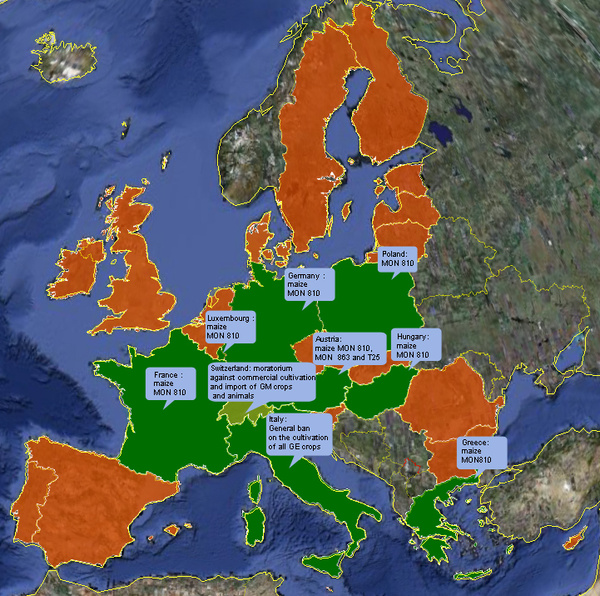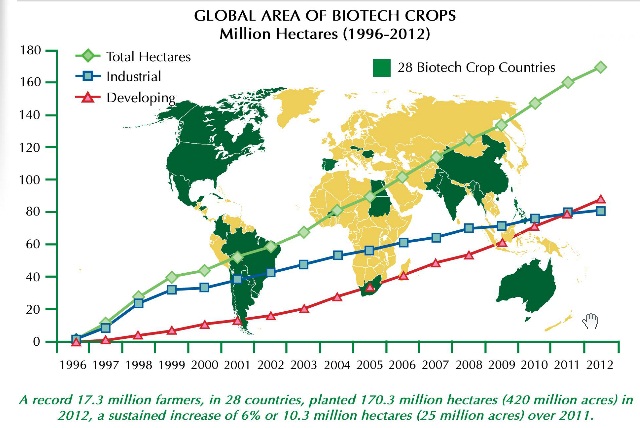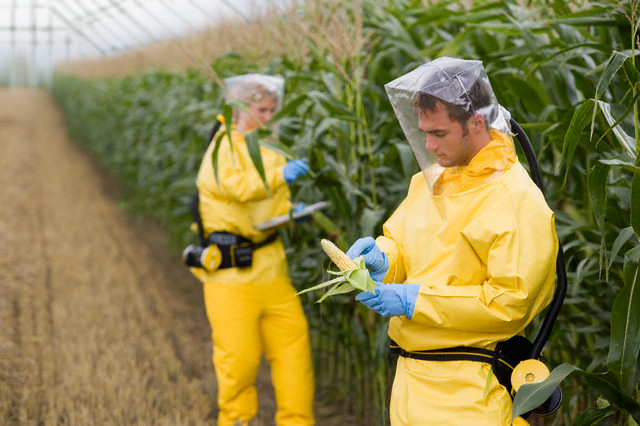How To Become More Self-Sufficient Without Starting a Full-Blown Farm…
Want to start preserving your harvest, making your own soap, or building a backyard root cellar — but not sure where to begin? “Homesteading Advice” gives you instant lifetime access to 35+ practical homesteading books on food preservation, veggie gardening, DIY natural cleaning products (save over $250 per year with this skill alone), brewing, off-grid energy, and a whole lot more…
Click Here To Check It Out Now!
As Monsanto is fighting to gain seed control of the whole world of agriculture by spreading genetically-modified crops across the world (with the support of the U.S. government according to Wikileaks), there is far greater opposition from the rest of the world, where many countries are not only labeling GMOs but also banning their cultivation altogether.
We know GMOs are not widely accepted across the world, but which countries have backed up their concerns about the safety of GMOs with bans? — Sustainable Pulse, a GMO news source, decided to research.
In these 38 countries, GM crops are banned on the government level, with the backing of the country’s scientists, doctors, and environmental agencies.
Monsanto has long claimed that “science” is on its side as if the GMO-Free and organic movements are stocked with uneducated zealots — but that couldn’t be farther from the truth. Bans on GMOs are commonplace around the world, the website’s research has found.
In Europe 28 countries have banned GM crops:
The list of countries with some sort of ban on GM crops is as follows:
Azerbaijan, Austria, Bosnia and Herzegovina, Bulgaria, Croatia, Cyprus, Denmark, France, Germany, Greece, Hungary, Italy, Latvia, Lithuania, Luxembourg, Malta, Moldova, the Netherlands, Northern Ireland, Norway, Poland, Russia, Scotland, Serbia, Slovenia, Switzerland, Ukraine, and Wales…

Green: countries with national ban of GMOs, Yellow: countries with national moratorium, Orange: countries with no ban. Source
Countries that are a part of the European Union had an option to opt-out from growing GM crops through a European Commission rule passed in March 2015. The ban was especially aimed at Monsanto’s corn MON 810, since other varieties of corn or other plants are widely rejected across Europe.
In the Americas 4 countries have bans in place:
Belize, Ecuador, Peru, and Venezuela.
There are also 4 countries in Asia who have banned GM crops:
Bhutan, Kyrgyzstan, Saudi Arabia, and Turkey.
And two countries in Africa who have done the same are:
Algeria and Madagascar.
Links to detailed reports on each country are available on Sustainable Pulse.
Currently there are 28 countries that grow GM crops:
The USA is the biggest grower with 73.1 million hectares of maize, soybean, cotton, canola, sugarbeet, alfalfa, papaya, squash (See how one former president gave Monsanto a free pass to allow this; click here)
The second biggest is Brazil with 42.2 million hectares of soybean, maize, and cotton. They are followed by Argentina with 24.3 million hectares of the same crops, Canada with 11.6 million hectares or canola, maize, soybean, sugarbeet, and India with 11.6 million hectares of cotton.
One hectare is a metric unit of square measure and is about 2.47 acres…

Countries that grow GMO foods by year and amount of hectares. Source
Other countries growing GM crops are: Australia, Bangladesh, Bolivia, Burkina Faso, Chile, China (where numbers are relatively small and a showdown is brewing over the issue), Columbia, Costa Rica (which has made recent efforts to become GM free), Cuba (which has mostly resisted U.S. pressure to forge deals for using more GM seeds, however) Czech Republic, Honduras, Mexico, Myanmar, Pakistan, Paraguay, Philippines, Portugal, Romania, Slovakia, South Africa, Spain, Sudan, and Uruguay.
Of course, it’s well worth noting that there are now more countries banning the cultivation of GMOs than actually growing them. And just to add insult to injury, they were also banned in Scotland, the home country of Monsanto’s founder Hugh Grant. It doesn’t sound a whole lot like this technology is “feeding the world” now, does it? (via AltHealthWorks).
If you like this idea, be sure to share it with your friends and inspire someone you know. Anything becomes possible with just a little inspiration…

